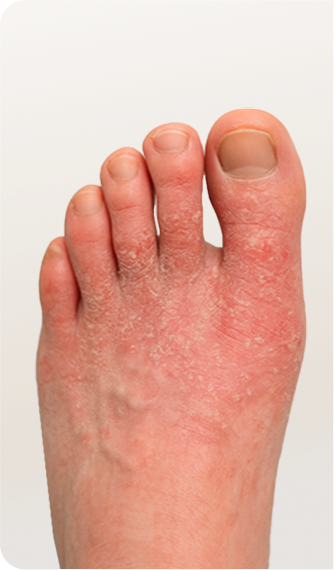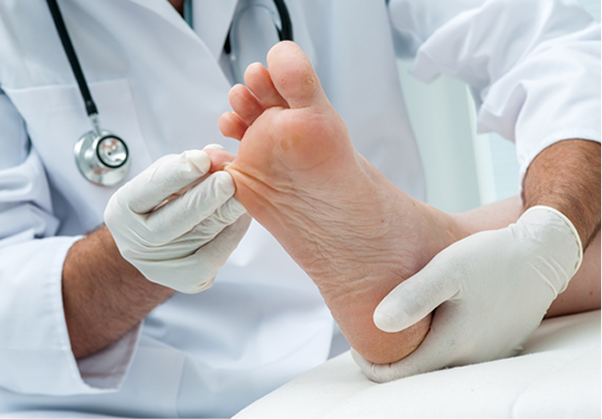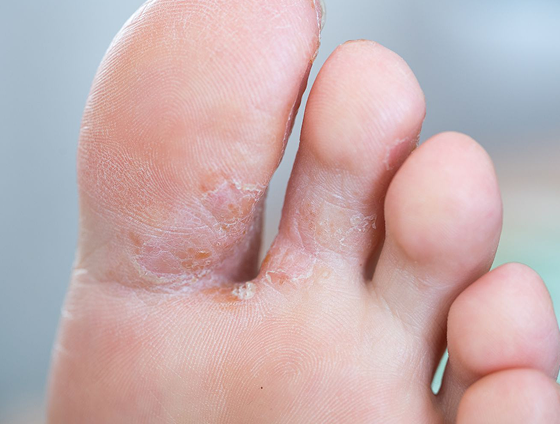
.png)
If You Have Athlete’s Foot, You’ll Know It
Athlete’s foot causes itching or burning between the toes, with red, cracked skin, blisters, or odor from trapped moisture. STRIDE’s clinician-reviewed plan targets these infections fast and helps prevent its return, once and for all.
GET TREATED NOW.png)
Athlete’s Foot Complications
Toenail fungus isn’t just cosmetic, it can cause persistent pain, spread to other nails or skin, and significantly affect quality of life.
- Stops infection from spreading
- Reduces pain and discomfort
- Prevents secondary bacterial infections
- Improves overall quality of life

BEFORE
.png)
AFTER
PrESCRIPTION Athlete's foot treatment
Choose your plan: 2-Week (oral + cream) vs 4-Week (cream only)

STRIDE Athlete’s Foot Defense™
Oral Terbinafine 250 mg
(1 tablet daily × 14 days)Prescription Ciclopirox 1% Cream 30g (apply twice daily × 2 weeks)
2- Week Course; fastest path to clear
$149

Prescription Ciclopirox 1% Cream
Prescription Ciclopirox 1% Cream 30g (apply twice daily × 4 weeks)
No pills; for those who prefer topical-only
Great for mild/moderate cases
For patients who want prescription treatment but prefer to avoid oral medications.
For patients who want prescription treatment butprefer to avoid oral medications.
$129

.jpg)
Understanding Athlete’s Foot
Athlete’s foot targets the skin’s outer layer, most often between the toes and on the soles. It thrives in warm, moist environments and can lead to persistent itching, redness, and flaking.
When untreated, the infection can extend to the toenails (onychomycosis) or other body areas, and cracked skin may allow bacteria to enter, causing further irritation or infection.
- Itching, burning, or stinging between toes
- Cracked, peeling, or dry skin on feet
- Red or raw skin from scratching
- Thickened or discolored toenails
Where Does Athlete’s Foot Come From?
Understanding risk factors can help you take preventive measures and seektreatment early

Frequent public facilities
Regular use of communal showers, pools, gyms,and locker rooms

Excessive
Moisture
Sweaty feet, wearing wet socks, or non-breathable footware

Warm
Environments
Hot, humid climates or enclosed footwear for extended periods

Compromised Immunity
Weakened immune system due to illness, medication, or age
Additional Risk Fatcors
Walking barefoot in public areas
Having minor skin or nail injuries
Previous fungal infections
Sharing towels, socks or shoes
Diabetes or circulation problems
Living in close quarters with others
.png)

Prevention
Keep feet clean and dry
Wear breathable footwear
Use anti-fungal powder
Don't share personal items
Walking barefoot
in public areasHaving minor skin or nail injuries
Previous fungal
infections
Sharing towels,
socks or shoesDiabetes or circulation problems
Living in close quarters
with others
Keep feet clean and dry
Wear breathable footwear
Use anti-fungal powder
Don't share personal items
Serious Health Complications
Left untreated, athlete's foot can lead to serious health complications
.svg)
Moderate Risk
Spread to Other Body Parts
Fungal infections can spread from feet to hands, groin area, or other parts of the body through contact, creating multiple infection sites.
Warning Signs
New itchy patches
Nail involvement
Ring-shaped rashes
Groin discomfort
.svg)
High Risk
Secondary Bacterial Infection
Cracked, damaged skin from athlete's foot creates entry points for bacteria, potentially leading to cellulitis or more serious infections
Warning Signs
Red Streaking
Pus or Discharge
Swelling and Warmth
Fever
SERIOUS HEALTH COMPLICATIONS
Left untreated, athlete's foot can lead to serious health complications



.svg)
.png)

.png)